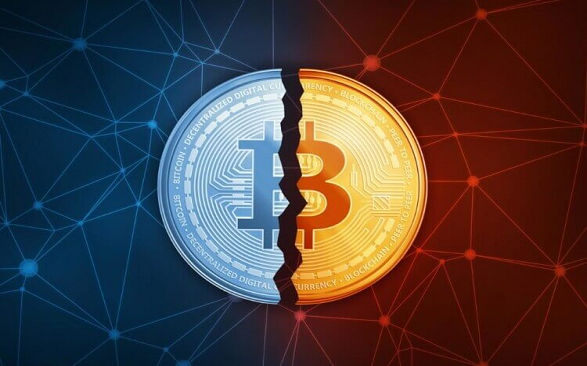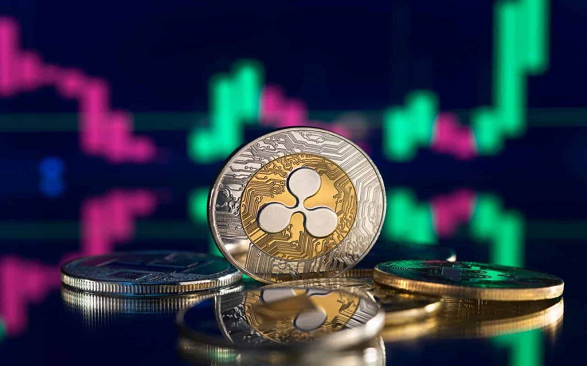Edward Aziegbe
Bitcoin, as a cryptocurrency, is the most dominant in the crypto market. It currently enjoys almost 50% market dominance, according to data by TradingView. Such a lion-share market position gives bitcoin that singular potential to move the market significantly, whether up or down. This is why the rate at which new bitcoins are minted matter—and greatly so. And this is where bitcoin halving comes in.
Bitcoin halving is a programmed event in which the number of new bitcoins issued every 10 minutes is cut in half. (Today 6.25 bitcoins are issued every 10 minutes.) This event occurs every 210,000 blocks (approximately every four years). In other words, the number of new bitcoins that are created and added to the market every day is reduced by 50% every four years. The next halving is projected to occur 20 April 2024.
Essentially, the idea is to ensure that the rate at which new bitcoins are created is controlled in a manner that puts inflation in check. Bitcoin halving is completed on the Bitcoin Protocol without any human intervention or control by any organization or group.
Logically, many traders in the crypto space consider bitcoin halving as a major catalyst for a bull market. Due in April 2024, bitcoin halving is expected to boost the crypto market which has been bearish for quite some time now.
Read also: What is bitcoin halving and why does it matter to crypto investors?
Post-Halving Bitcoin Forecast: BTC to $148,000 in 2025?
The crypto ecosystem is beginning to buzz as it anticipates the next bitcoin halving in April 2024. The next bitcoin halving will reduce the block reward paid to miners to 3.125 BTC. This is down from the current block reward of 6.25 BTC.
As the next cycle loads, speculations over what new heights BTC price may climb to are rife in the crypto market. One of such speculations is that by Pantera Capital in its “Blockchain Letter” of 22 Aug 2023. Pantera Capital predicts that BTC will maintain its historical trend:
Bitcoin has historically bottomed 477 days prior to the halving, climbed leading into it, and then exploded to the upside afterwards. The post-halving rallies have averaged 480 days – from the halving to the peak of that next bull cycle.
IF history were to repeat itself, the price of bitcoin should have troughed December 30, 2022.
Pantera Capital, Blockchain Letter, 22 August 2023
Pantera Capital sees a rally into early 2024 which will become strong after the actual halving. By the time of the next halving, Pantera Capital predicts that BTC/USD could be trading around $35,000. Considering that BTC price currently hovers around the $25,000 mark, the probability of BTC price adding $10,000 appears to be fairly reasonable. After all, BTC price once hit $65,000 at its peak.
But in the months after bitcoin halving, Pantera Capital predicts that BTC price may hit $148,000 in 2025. “Since most bitcoins are now in circulation,” states Pantera Capital, “each halving will be almost exactly half as big a reduction in new supply.” Assuming history repeats itself in April 2024, the next bitcoin halving will take bitcoin from to $35,000 before the halving and $148,000 after.
Pantera Capital, Blockchain Letter, 22 August 2023
Read also: What do ‘bull’ and ‘bear’ markets mean and how do you identify them?
The impact of level of money supply by central banks on post-halving price
But will traders’ expectations of a catalytic bitcoin halving come April 2024 be met?
If past performance is anything to go by, bitcoin halvings have never been the magic wand or some open sesame to a bullish crypto market. Bull runs that follow bitcoin halving events have been catalyzed by a combination of factors. One of those factors is the major central banks globally.
Central banks such as the United States Federal Reserve (Fed), People’s Bank of China (PBOC), European Central Bank (ECB), and Bank of Japan (BOJ) have a noticeable impact on bitcoin price. This is when these central banks boost their year-on-year M2 money supply growth rates.
Whenever there is an acceleration of money supply by these central banks, markets become bullish. But when they decelerate money supply, markets become bearish. For instance, a 6% acceleration in money supply by the Fed, PBOC, ECB, and BOJ triggered bull runs after bitcoin-halving events.
So as you look to profit from the next bitcoin halving, don’t get your eyes off the level of money supply in the fiat world.
Read also: Why is liquidity important to your crypto investment?
Discover more from Crypto Asset Buyer
Subscribe to get the latest posts sent to your email.




